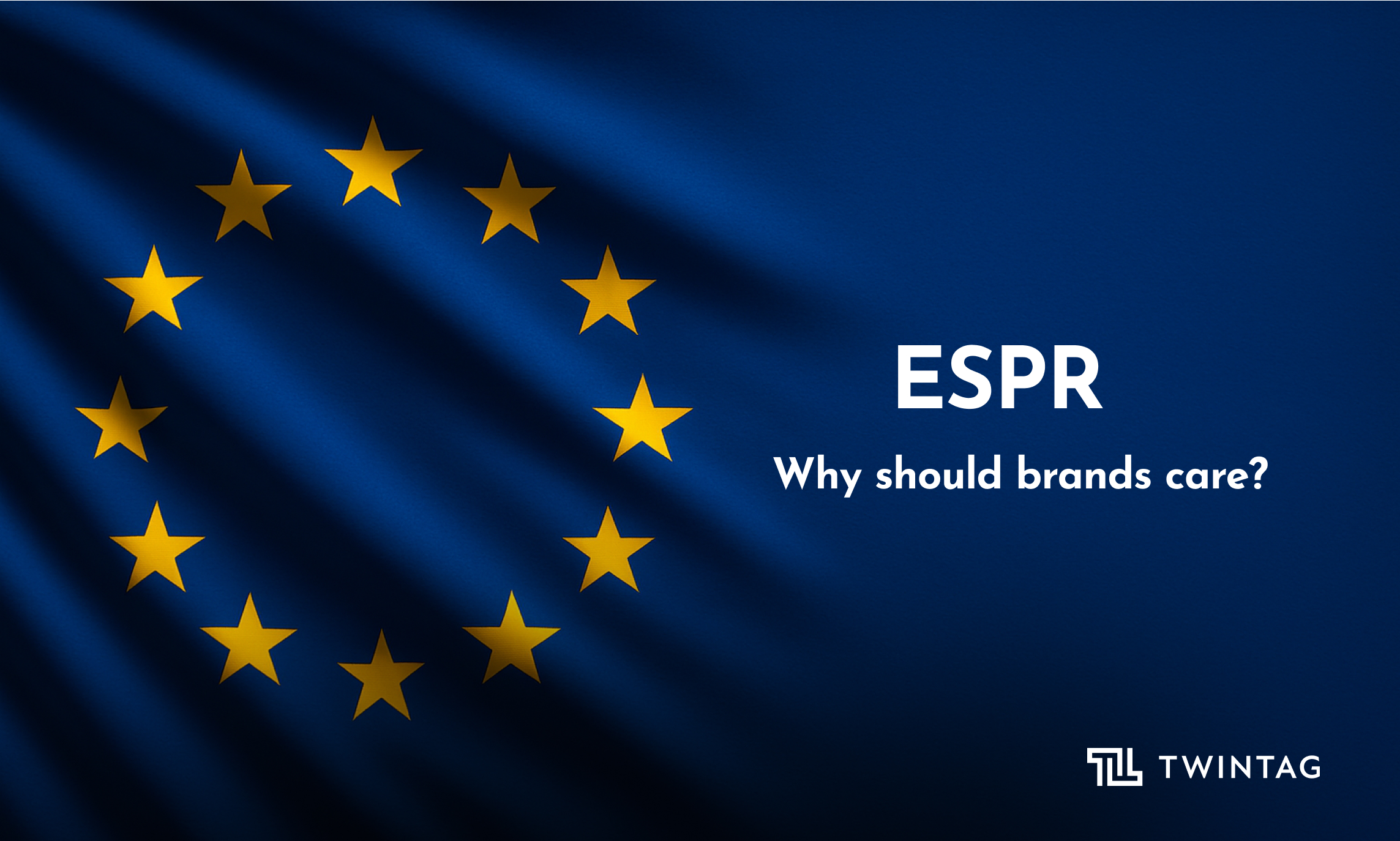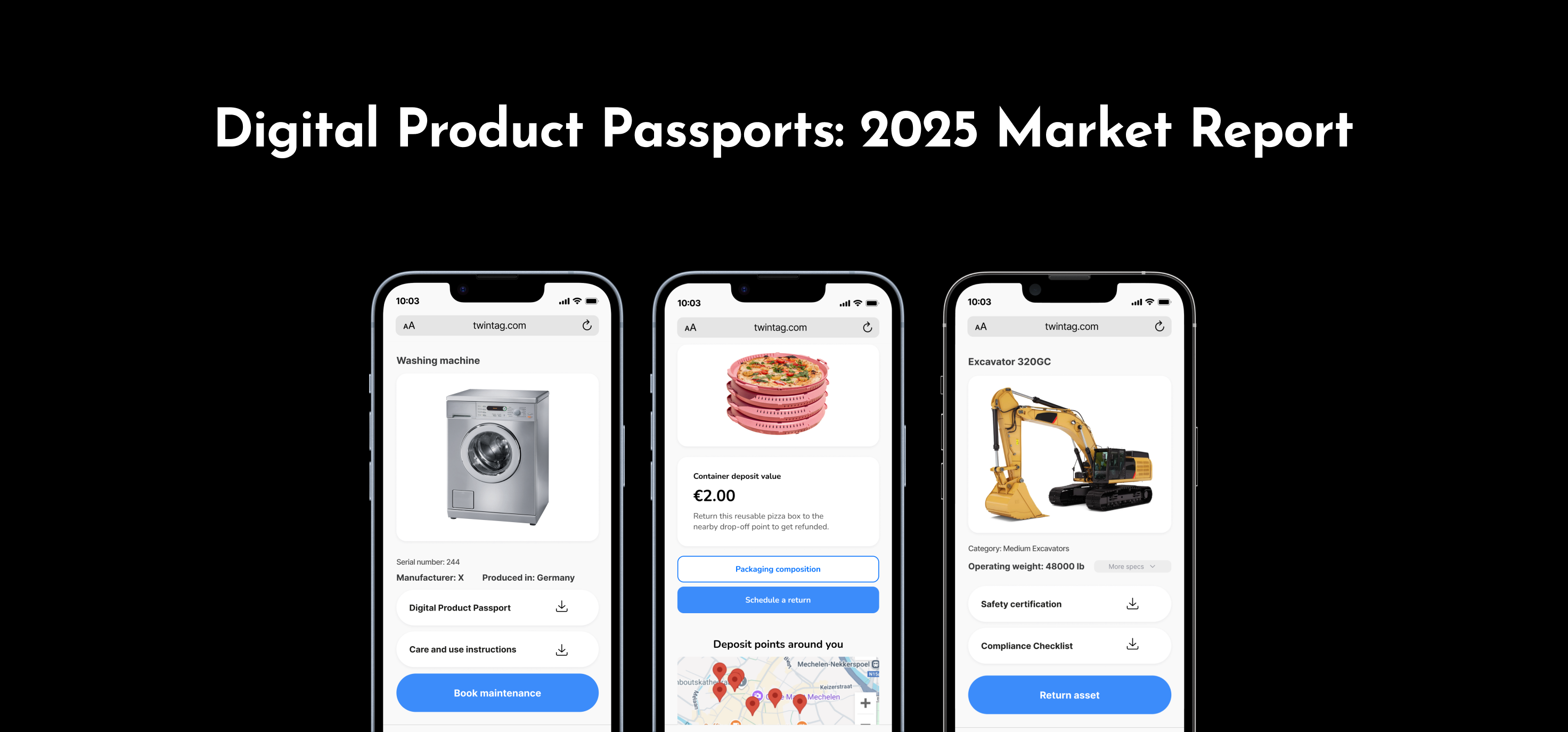ESPR is here: How the EU ESPR is reshaping product design, traceability and brand trust
ESPR transforms how products are made and managed. See the key changes and how brands can turn compliance into opportunity.

If your brand or product lives in the EU (or supplies into it), the new regulation known as the Ecodesign for Sustainable Products Regulation (ESPR) is no longer something to “monitor” - it’s something to act on. This policy influences everything: from material choice, repairability, reuse and recyclability. On top it couples that with a new data layer: the Digital Product Passport (DPP).
In this article we’ll walk you through what ESPR is, why it matters, key requirements, timelines and how brands can treat it as an opportunity (not just a cost). Because at the heart of the regulation are two huge themes: compliance + product feedback and customer experience + operational excellence - which is exactly where your digital product passport / circularity expertise comes in.
What is ESPR?
In short: ESPR is a framework regulation enacted by the European Commission that replaces the older Ecodesign Directive (2009/125/EC). It entered into force on 18 July 2024.
But it’s far more than just a replacement. Under ESPR:
- The scope expands from energy-related products to almost all physical goods placed on the EU market (with exceptions such as food, feed, medicines, living plants/animals).
- The requirements are not just energy efficiency but durability, repairability, reuse, recyclability, recycled content, lifecycle environmental footprint and more.
In effect, ESPR is part of the broader push under the European Green Deal and the Circular Economy Action Plan, basically: “make sustainable products the norm, not the exception”.
ESPR: Why should brands care?
Three major reasons:
1. Regulatory risk = business risk
Non-compliance will mean products cannot be placed on the EU market, or may be withdrawn. For companies importing into the EU, or selling to EU-based consumers, this means supply-chain disruption, higher costs, loss of market share. The regulation gives national authorities more power to enforce.
2. Consumer expectations & brand trust
Today’s consumers expect brands to prove what used to be taken on faith:
- What exactly is this product made of?
- Where did the materials come from?
- Can I repair it, reuse it, or resell it?
- What happens at end-of-life?
- Is the sustainability claim backed by real data?
This shift is especially strong in categories like textiles, apparel, sports equipment, furniture, electronics and packaging -industries where greenwashing, inconsistent quality, or opaque supply chains have eroded confidence.
Instead of glossy marketing, consumers want evidence.
Instead of sustainability slogans, they want transparency.
Instead of vague promises, they want product-level facts.
Brands that embrace ESPR will be able to demonstrate - not just communicate - the quality, durability, circularity and responsibility behind their products. Brands that don’t will increasingly look outdated, unreliable, or even untrustworthy. We wrote more about this here.
3. Competitive opportunity for product-innovation & circularity
The ESPR forces a structural shift in how products are designed, built, used and recovered. Brands that adopt circular principles early unlock a very real competitive advantage. Circular design leads to:
- Operational efficiency (less waste, fewer failures, lower service costs)
- Cost savings (longer-lasting products, fewer returns, optimized materials)
- Supply-chain resilience (more predictable inputs, less dependency on virgin materials)
- New revenue streams (take-back, refurbishment, resale, second-life programs)
ESPR: What are the key requirements?
Here are some of the most important obligations brands, manufacturers, importers and distributors need to be aware of:
Scope & product groups:
- Almost all physical goods placed on the EU market are in scope (unless expressly exempt).
- The regulation is framework-type: The Commission uses delegated acts to set detailed ecodesign requirements for specific product groups (or horizontal measures).
- First working plan (2025-2030) sets priority product groups: e.g., steel, aluminium, textiles/footwear, furniture, tyres, mattresses.
Performance & information requirements:
Under ESPR, depending on the product group, requirements may include:
- Minimum durability, repairability, upgradability, recyclability.
- Presence of recycled content; avoidance of substances that inhibit circularity.
- Information obligations: life-cycle environmental footprint, material composition, end-of-life instructions etc.
Digital Product Passport (DPP):
One of the most disruptive pieces: The DPP is a digital identity for product, component or material, providing traceability, transparency and data exchange across lifecycle.The DPP will typically include: material origin, repair history/spare parts, recyclability, environmental footprint, instructions, compliance documentation. You can learn much more about the Digital Product Passport here.
Other measures: unsold goods, green public procurement:
- For the first time, ESPR allows bans or restrictions on destruction of unsold consumer goods (e.g., textiles & footwear) and requires large companies to disclose data on unsold stock destruction.
- The regulation enables mandatory green public procurement rules: public authorities must buy sustainable products (once requirements defined) which pushes demand.
Timeline & implementation:
- Regulation entered into force 18 July 2024.
- Delegated acts and working plans phase in starting 2025-2030. First product-specific requirements expected around 2027.
Conclusion
The EU ESPR is a transformational wave in product design, data, traceability and brand positioning. For brands it presents risk and opportunity: risk if you ignore it, opportunity if you embed circularity, transparency and lifecycle thinking into your operations.
Companies that approach ESPR as a design principle rather than a compliance burden will be the ones who benefit most. Achieving this, however, depends on one thing: the ability to connect accurate, up-to-date product data across suppliers, operations, service partners and end users.
If you’re exploring how to structure this data layer, how to create a scalable DPP approach, or how to turn ESPR requirements into practical workflows, Twintag’s experience across industries can offer a useful reference point. The regulation is complex, but implementation doesn’t need to be, especially when you build it on a clear, modular product identity.


-min.png)



